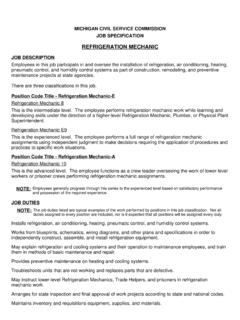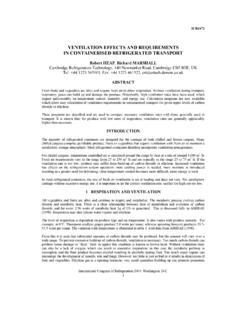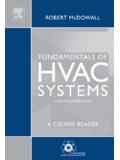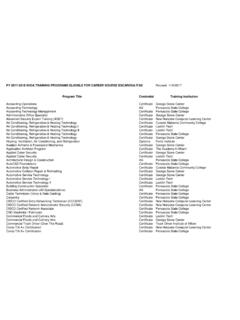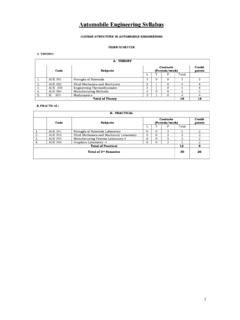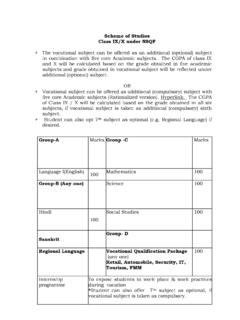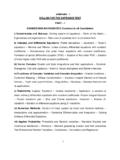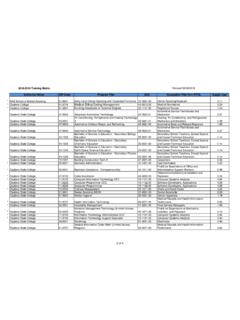Transcription of ( B.E. Mechanical Engineering Sem –VII & VIII )
1 SHIVAJI UNIVERSITY KOLHAPUR Page 1 B Accredited By NAAC Revised Syllabus of ( Mechanical Engineering Sem VII & VIII ) To be introduced from the academic year 2010-11 ( from June 2010 ) Onwards (Subject to the modifications will be made from time to time) SHIVAJI UNIVERSITY KOLHAPUR Page 2 SHIVAJI UNUVERSITY, KOLHAPUR Structure of B. E. ( Mechanical Engineering ) Semesters VII & VII Sr. No. Subject L TUT P Dr Total PT TW OE POE Total 1 Refrigeration & Air Conditioning 3 - 2 - 5 100 25 --- 25 150 2 Mechanical System Design 3 - 2 - 5 100 25 25 -- 150 3 Finite Element Analysis 3 - 2 - 5 100 25 -- -- 125 4 Elective - I 3 - 2 - 5 100 25 -- 25 150 5 Elective - II 3 - 2 - 5 100 25 -- 125 6 Seminar - - 2 - 2 - 50 -- - 50 7 Project - - 3 - 3 - 50 -- - 50 8 Industrial Training @ - - - - - - 50 - 50 Total 15 - 15 - 30 500 275 25 50 850 Sr.
2 No. Elective I Elective - II 01 Experimental Mechanics Total Quality Management 02 Noise & Vibration Nano Technology 03 Automobile Engineering Industrial Product Design 04 Jigs and Fixture Design $ Human Values And Professional Ethics @ Industrial training of minimum two (2) weeks should be done after (II) in summer vacation and it s assessment will be done in (I) based on report submitted Work load of the assessment can be assigned to the project seminar guide. $ The Theory of paper examination duration 4 hours Unless mentioned ,theory paper examination duration 3 hours ( Mechanical Engineering ) Sr. No. Subject L TUT P Dr Total PT TW OE POE Total 1 Mechatronics 3 - 2 - 5 100 25 25 -- 150 2 Industrial Engineering 3 - 2 - 5 100 25 -- --- 125 3 Power Engineering 3 - 2 - 5 100 25 25- --- 150 4 Elective III 3 - 2 - 5 100 25 -- --- 125 5 Elective IV 3 - 2 - 5 100 25 --- 125 6 Project - - 5 - 5 - 100 75 175 Total 15 - 15 - 30 500 225 50 75 850 Sr.
3 No. Elective III Elective IV 01 Production Management Industrial Automation & Robotics 02 MEMS Enterprise Resource Planning 03 Machine Tool Design Cryogenics 04 Computational Fluid Dynamics & SCADA Programing [Note :- Examination scheme and term work marks strictly as per above structure] SHIVAJI UNIVERSITY KOLHAPUR Page 3 COURSE CODENO. SUBJECTCODE NO. ( Mechanical ) PART-I ( 2010-11 From July 2010) 1. REFRIGERATION AND AIR CONDITIONING Teaching Scheme Examination Scheme Lectures: 3 Hrs/ Week Theory :100 Marks Practicals: 2 Hrs/ Week Term work: 25 Marks Practical and Oral: 25 Marks SECTION I 1 Review of Thermodynamics: 01 Laws, General equations, Processes, Equations applied to processes. 2 Basic Refrigeration Cycles: 07 Carnot cycle, Reversed Carnot cycle, Simple Vapour compression cycle, sub-cooling, superheating, Liquid to suction vapour heat exchanger, Calculations and performance of above cycles, Actual vapor compression cycle, Bell Coleman - Reversed Bryton cycle, Air cycles for air crafts (Descriptive Treatment).
4 3 Refrigerants: 05 Classification, Desirable Properties like Thermodynamic, physical,& chemical. Comparison among commonly used refrigerants, Selection of Refrigerants, Effect on Ozone depletion and global warming, Alternative Refrigerants. 4 Multi pressure System: 03 Removal of flash gas, Flash inter-cooling, Water-cooling, Multistage, Multi-evaporator & Cascade System, Introduction to cryogenic engg & application, Claude cycle, Linde Cycle. 5 Vapor Absorption System: 02 Aqua Ammonia system, Lithium Bromide water vapour system, Crystallization, Coefficient of Performance, Comparison with Vapour Compression cycle. (Descriptive treatment only) 6 Refrigeration Equipments: 03 Compressor, Condenser, Evaporator, Expansion devices, Types, selection, use of insulation, methods of charging and testing, Non conventional methods of refrigeration like vortex tube, Pulse Tube.
5 SECTION II 7 Psychrometry: 07 Moist air as a working substance, Psychrometric properties of air, Use of Psychrometric tables and charts, Processes, Combinations and Calculations, ADP, Coil Condition lime, Sensible heat factor, Bypass factor, Air washer and it s applications. 8 Comfort: 02 Thermal exchange between human body and environment, factors affecting comfort, effective temperature comfort chart, ventilation requirements. 9 Heating and Cooling Load Calculation: 07 Representation of actual air conditioning process by layouts & on psychrometric charts, Load analysis RSHF, GSHF, ESHF, Enumeration & brief explanation of the factors forming the load on refrigeration and air conditioning systems, Energy requirements of different types of air conditioning systems, Energy conservation in air conditioning.
6 SHIVAJI UNIVERSITY KOLHAPUR Page 4 10 Air Distribution System: 04 Re-circulated air, Ventilation air, Duct work, Use of friction loss & rectangular equivalent of round duct chart, duct system, principle of duct sizing, and air distribution it s norms, diffusers, dampers, layout, duct systems for theaters, auditorium, hospitals, assembly shop,etc Reference Books: 1 Principles of Refrigeration - Roy J. Dossat 2 Refrigeration and Air Conditioning - Stoker 3 Refrigeration and Air Conditioning - C. P. Arora 4 Refrigeration and Air Conditioning - Arora Domkundwar 5 Refrigeration and Air Conditioning - V. K. Jain 6 Air Conditioning Principles and Systems - Pita 7 Air Conditioning Applications and Design - W. P. Jones 8 Air Conditioning Engineering - W. P. Jones 9 Thermal environmental Engineering - Tnerellaild Term Work 1 Study of various methods of refrigeration and its applications 2 Study and demonstration of refrigeration system.
7 (water cooler refrigeration, chiller, ice plant and cold storage). 3 Study and demonstration on air conditioning systems. (Unitary and central air conditioning / system) 4 Study and demonstration of controls in refrigeration. 5 Visit to central air conditioning or cold storage or dairy plant ot ice plant related with refrigeration & air conditioning system. 6 Study or demonstration of dehydration, charging leak testing and testing of refrigeration system with trouble shooting. 7 Study or demonstration or trial on vapour absorption system. 8 Study / Trial on heat pump. 9 Market survey of various refrigerating & air conditioning systems which include the equipments with related specifications, manufacturer, cost. ( minimum 3 to 4 equipments) 10 Study & trial on Cascade refrigeration system. 11 Trial on refrigeration system 12 Trial on air conditioning system. 13 Trial on ice plant. 14 Trial on Cascade system.
8 * Minimum Three trials are to be conducted. SHIVAJI UNIVERSITY KOLHAPUR Page 5 COURSE CODENO. SUBJECTCODE NO. ( Mechanical ) PART-I ( 2010-11 From July 2010) 2. Mechanical SYSTEM DESIGN Teaching Scheme: Examination Scheme: Lectures:-3 Hrs/week Theory: - 100 marks Practicals:-2 Hrs/week Term work: - 25 marks Oral exam. : - 25 marks SECTION-I 1 Aesthetic and Ergonomic consideration in Design:- 05 Basic types of product forms, Designing for appearance, shape, Design features, Materials, Finishes,proportions,Symmetry,Contrast s colour code. Ergonomic considerations- Relation between man, machine and environmental factors. Design of displays and controls. Practical examples of products or equipments using ergonomics and aesthetic design principles.
9 2 System Approach to Design:- 04 System Approach to Design; Mathematical model; Lumped system; Dynamic response of lumped & distributed system; Modeling of masses, Elasticity, Inertia, Damping and friction. 3 Pressure Vessel Design:- 06 Thin and thick cylinders; failure criteria of vessels; Lame s equation; Clavarino s and Birnie s equation; Autofrettage and compound cylinders; Types of pressure vessels-Horizontal and vertical; Classification of pressure vessel as per IS2825, to design of pressure vessels as per IS Codes. Shell and end closures. Effect of opening & nozzles in shell & covers. Types of pressure vessel support . 4 A) Brakes:- Design consideration in brakes, Band, Internal expanding shoe, External 05 contracting shoe. Thermal consideration and rating of brakes. B) Clutches:- Design requirement of friction clutches, Selection criteria.
10 Torque transmitting capacity of single plate, Multidisc clutch, Cone clutch and Centrifugal clutch. SECTION-II 5 Stastical considerations in Design:- 04 Frequency distribution- Histogram and frequency polygon- Normal distribution- Units of measurement of central tendency and dispersion- Standard variable- Population combination- Design and natural tolerances- Design for assembly- Statistical analysis of tolerances- Mechanical reliability and factor of safety. 6 Design of Gear boxes for machine tool applications:- 05 Determination of variable speed range- Graphical representation of speeds- Structure diagram- Deviation diagram- Ray diagram- Selection of optimum ray diagram- Difference between number of teeth of successive gears in a change gear box- Analysis of twelve speed gear box- Compound ray diagram 7 Design of Material handling system:- 05 Design of belt and chain conveyors Power requirement, Selection of belt and chain, Design of tension take up unit, Idler pulley SHIVAJI UNIVERSITY KOLHAPUR Page 6 8 Optimum Design:- 06 Objectives of optimum design- Johnsons Method of Optimum Design (MOD),Adequate and optimum design.
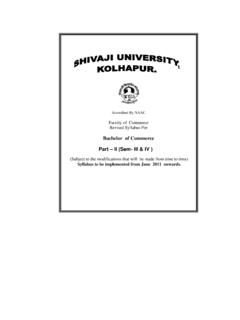

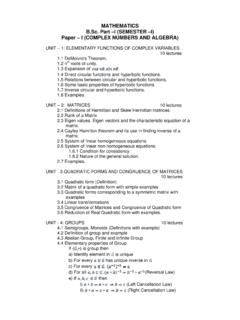
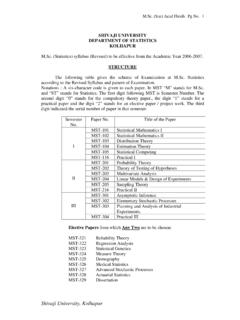

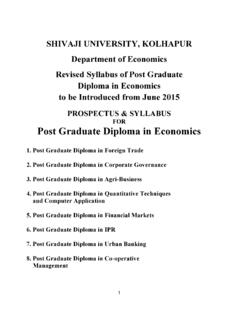



![Revised Syllabus For B.Sc, Part III [Mathematics] …](/cache/preview/d/b/6/0/d/d/1/e/thumb-db60dd1ea7378bffcc12e6f47a9540f5.jpg)
